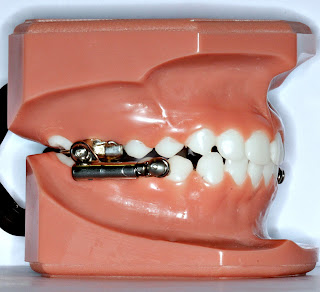August 15, 1534 marks the day when St. Ignatius of Loyola
and six fellow classmates took vows to become Catholic priests. This led to the
formation of a new order of priests, the Society of Jesus, also known as the
Jesuits, in September of 1534. The Jesuits are close to my heart because I had
an excellent undergraduate education provided by a Jesuit institution, Regis University. Regis is one of a few Jesuit colleges and
universities in the United
States. It is a sister school to Boston College,
Gonzaga, Loyola Marymount, and Georgetown, to name a few.
The Jesuits and the first Superior General of the order, St. Ignatius, led the
way in establishing excellent educational institutes. They specifically
established schools through mission work (predominately in South America and Asia) to give high quality educations in liberal arts,
natural and social sciences, performing arts, and the various branches of
knowledge, with an emphasis in Christian teaching and theology.
A second benefit we have received from the Jesuits and St.
Ignatius in particular, is the writings of St. Ignatius, known as the Spiritual Exercises. This is a
compilation of Christian prayers and meditations with a focus on becoming
involved in the life of Christ and to live out a relationship with Christ. These exercises are not meant for clergy
alone; they are applicable to lay members of the church congregation for
spiritual growth and discernment. The exercises allow one to become involved in
the text of Scripture, to consider the perspectives of Jesus, his disciples,
and those in the crowds who followed Jesus through his life, ministry, and
passion on the cross. It allows us to focus on the intricacies of various
passages of scripture in order to become sensitive to the culture, environment,
and various opinions of that day and age.

St. Ignatius wrote from the point of view that humans are
pulled in two different directions. One direction is toward the grace of God,
the other toward the sinful nature. The more people can dedicate themselves to
a life of prayer, mediation, and a relationship with Christ, the more spiritual
discernment they will gain, which allows them to move in a direction towards
God’s grace, rather than toward the sinful nature. This is supported through Romans 8:5-8:
“Those
who live according to the flesh have their minds set on what the flesh desires;
but those who live in accordance with the Spirit have their minds set on what
the Spirit desires. The mind
governed by the flesh is death, but the mind governed by the Spirit is life and
peace. The
mind governed by the flesh is hostile to God; it does not submit to God’s law,
nor can it do so. Those who are in the realm of the flesh
cannot please God.”
This is not advocating any sort of works
based relationship to earn God’s grace. However, if we dedicate our lives to
knowing Christ, through his Word, we will gain wisdom and discernment about
life, how to strengthen ourselves to avoid our temptations, and how to grow in
the grace and knowledge of Jesus.
Although I am not Catholic, I believe there
are many beneficial ideas and teachings that stem from the Catholic Church, the
early Church Fathers, and various church leaders throughout history. I consider
the Jesuits to be kind and compassionate, mission driven men who work for the Lord in a lost and
lonely world. They work to empower people to take charge of their futures by
giving them educations and the tools they need to succeed. Not only do they
offer a quality education, they offer spiritual education to reach their
students’ hearts and spread the gospel around the world. I would encourage
people to participate in the Spiritual Exercises, to consider sending their
children to schools that offer classical educations, and to participate in
mission work in our own communities and around the world.
Our office has made it a goal to provide
wonderful orthodontic care not only through our knowledge of orthodontic
treatment, but through establishing and building relationships with our
patients. We can only strengthen our relationships with our patients and the
community after growing in our relationships with Christ, who gave us the
ultimate example of how to lead, serve, and love one another. We appreciate the
opportunity to build Christ-centered relationships with our patients and will
strive to continue that tradition
-Stevie Lawrence, CDA
www.smileteam4u.com




